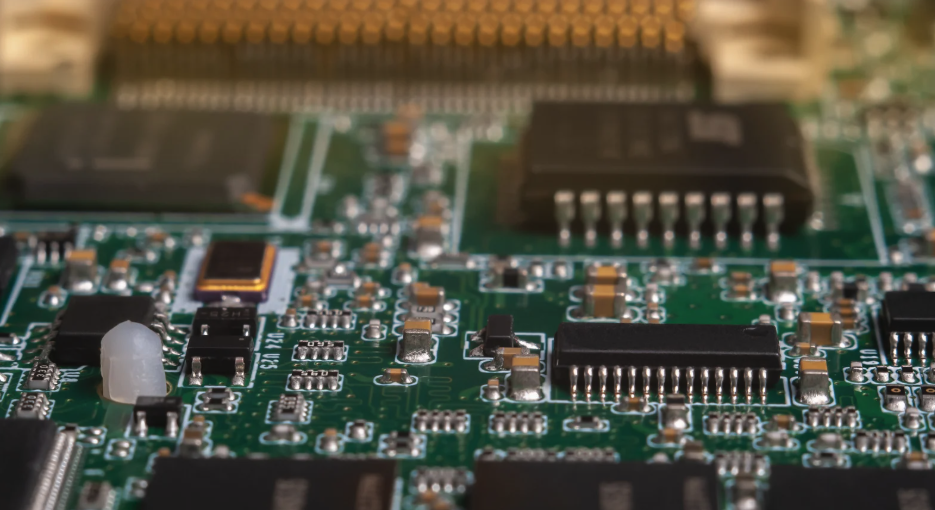Digital Signal Processors (DSPs)

More from the Category
Digital Signal Processors (DSPs) are a cornerstone of modern technology, powering countless devices with remarkable efficiency. These specialized integrated circuits process analog signals in real-time, enabling seamless performance in smartphones, laptops, stereo systems, and more.
Despite their significance in the current digital era, DSPs often go unnoticed, quietly driving the functionality we rely on daily. Their intricate architecture allows for high-speed execution of complex algorithms with precision, making them indispensable across industries such as communications, healthcare, and defense. As these tiny yet powerful chips continue to evolve, their potential to shape the future remains boundless.
What is a DSP?
A Digital Signal Processor (DSP) is a specialized microprocessor designed to efficiently process and manipulate digital signals in real-time. These signals can encompass various data types, including audio, video, sensor data, and communication signals like Wi-Fi and cellular signals. What sets DSPs apart from general-purpose microprocessors (such as those in your computer or smartphone) is their optimization for specific tasks, making them incredibly efficient within their designated domains.
DSPs are highly efficient in handling tasks that demand fast and precise digital signal processing, such as filtering, modulation, demodulation, and compression. Let’s examine how they operate fundamentally!
How Does a Digital Signal Processor Work?
A digital signal processor utilizes a precisely coordinated hardware and software optimization integration to perform their impressive functions. Below, we provide a comprehensive explanation of how they operate:
Sampling: DSPs take in analog signals from the real world, such as sound waves from a microphone or data from sensors. Before any digital processing can occur, these analog signals must be converted into a digital format. This transformation process, known as sampling, captures periodic snapshots of a continuous analog signal at specific intervals, converting it into a series of digital values.
Digital Processing: Once the analog signals are converted into a digital format, digital signal processors can manipulate them using a wide range of mathematical operations. These operations form the core of DSP functionality and include filtering to isolate specific frequency components, modulation to encode information onto carrier signals, demodulation to retrieve information, and data compression to reduce file sizes. DSPs stand out because their dedicated hardware is optimized for performing these operations swiftly and efficiently.
Real-Time Processing: One of the hallmark features of DSPs is their ability to process signals in real time with minimal latency. This is crucial for applications where instantaneous responses are vital. In audio processing, for instance, DSPs enable live music effects, noise reduction in headphones, and crystal-clear audio in video conferencing. In the medical field, digital signal processors power devices that continuously monitor vital signs and provide immediate feedback to healthcare professionals.
Output: After the digital signals have been processed, DSPs can convert them back into analog signals if required. This final step allows for the output of processed data to devices such as speakers, displays, or communication interfaces.
Applications of Digital Signal Processors

DSPs are incredibly versatile, playing a crucial role across various industries and shaping how we interact with technology. Here are some key areas where they make a significant impact:
Audio Processing: DSPs are at the heart of audio systems, from enhancing the equalizer settings on your smartphone to enabling advanced noise-canceling headphones. They refine audio quality, remove unwanted noise, and create captivating music and media audio effects.
Telecommunications: DSPs are the backbone of telecommunication systems. They handle tasks such as encoding, decoding, and data compression, ensuring efficient data transmission. You’ll find DSPs in mobile phones, VoIP services, and wireless communication devices.
Medical Devices: In the healthcare industry, DSPs are indispensable. They power medical imaging devices like MRI and ultrasound machines, ensuring high-resolution images for accurate diagnosis. Additionally, DSPs are critical components in patient monitors, continuously tracking vital signs and providing real-time data to healthcare providers.
Automotive: Modern vehicles rely on DSPs for a multitude of functions. They manage engine control, optimize fuel efficiency, and enhance in-car infotainment systems. Moreover, DSPs are crucial for advanced driver assistance systems (ADAS), enabling features like lane-keeping assistance and adaptive cruise control.
Radar and Sonar Systems: Both military and civilian radar and sonar systems rely extensively on DSPs. They process signals to provide accurate navigation, target tracking, and threat detection information. This is vital for air traffic control, maritime navigation, and defense applications.
Image and Video Processing: DSPs contribute significantly to image and video processing. In digital cameras, they enhance image quality by reducing noise, improving sharpness, and optimizing exposure settings. DSPs also enable features like image stabilization and facial recognition in modern smartphones and security cameras.
Looking Ahead
Digital Signal Processors, though often not recognized for their contributions, have revolutionized the tech world and our day-to-day lives. Their ability to process digital signals in real-time has revolutionized industries, making our devices smarter, more efficient, and more enjoyable to use. From enhancing the audio quality of our favorite music to powering advanced medical devices and communication systems, DSPs shape how we live, work, and interact with technology. They remain vital to sustaining and helping us enjoy an increasing array of seamless and enjoyable personal technology. So, the next time you experience crystal-clear sound or seamless video streaming, remember the DSP working behind the scenes to make it possible!
Want to learn more about the growing impact of Digital Signal Processors? Check out this article!
Need Reliable DSP Solutions?
As DSP technology advances, the demand for high-performance, reliable components has never been greater. At Microchip USA, we understand the importance of reliable and high-performance DSP solutions. Whether you're designing cutting-edge electronics or seeking high-quality components, we’re here to help. If you need help finding the right DSP or any other electronic component, contact us today, and our team will assist you in sourcing the right part for your needs!


